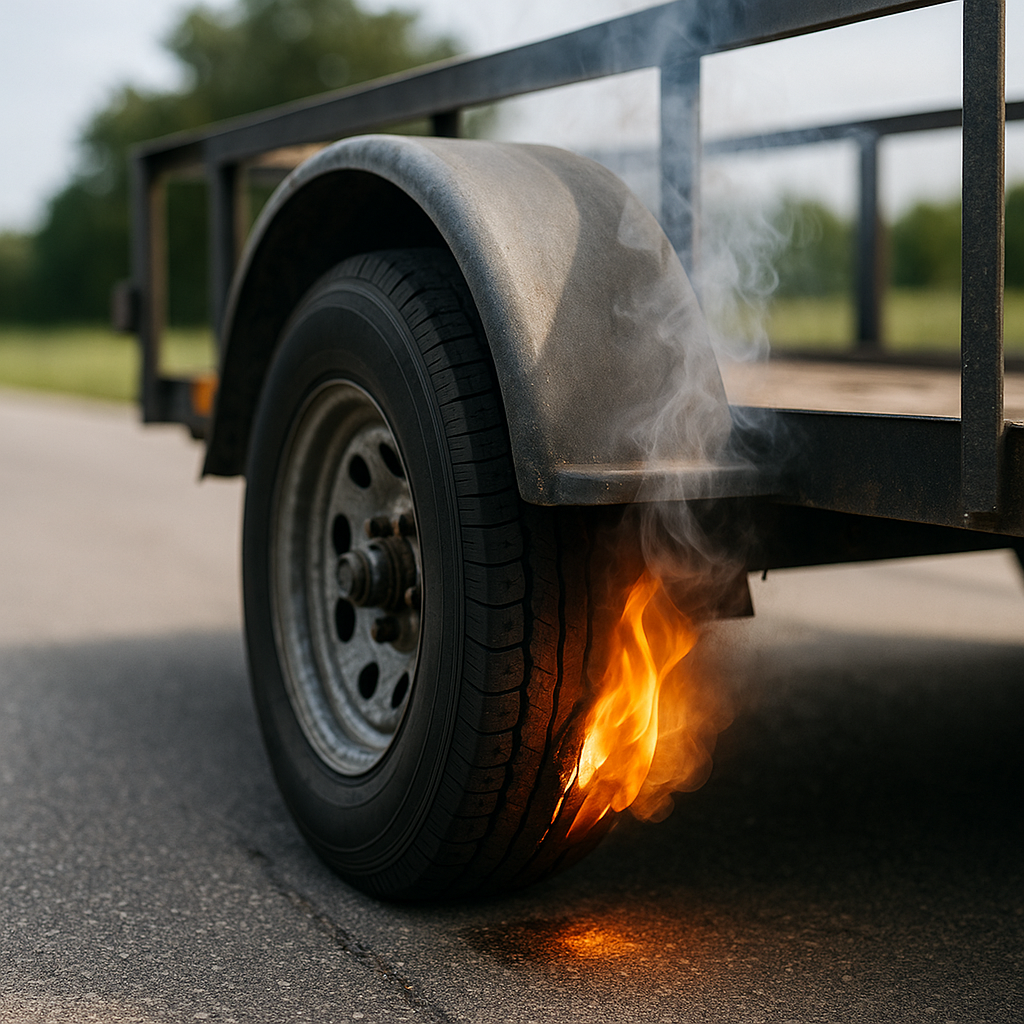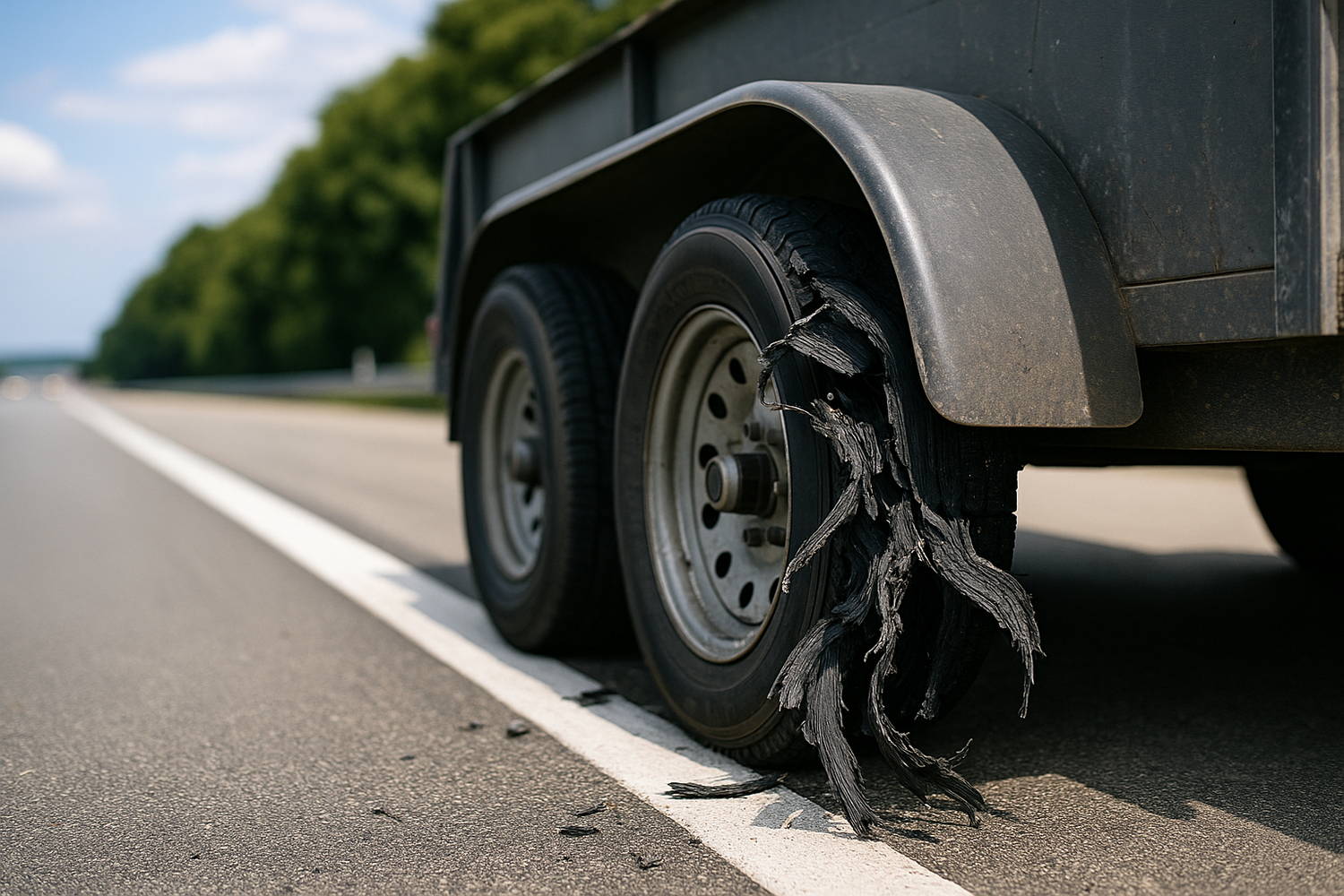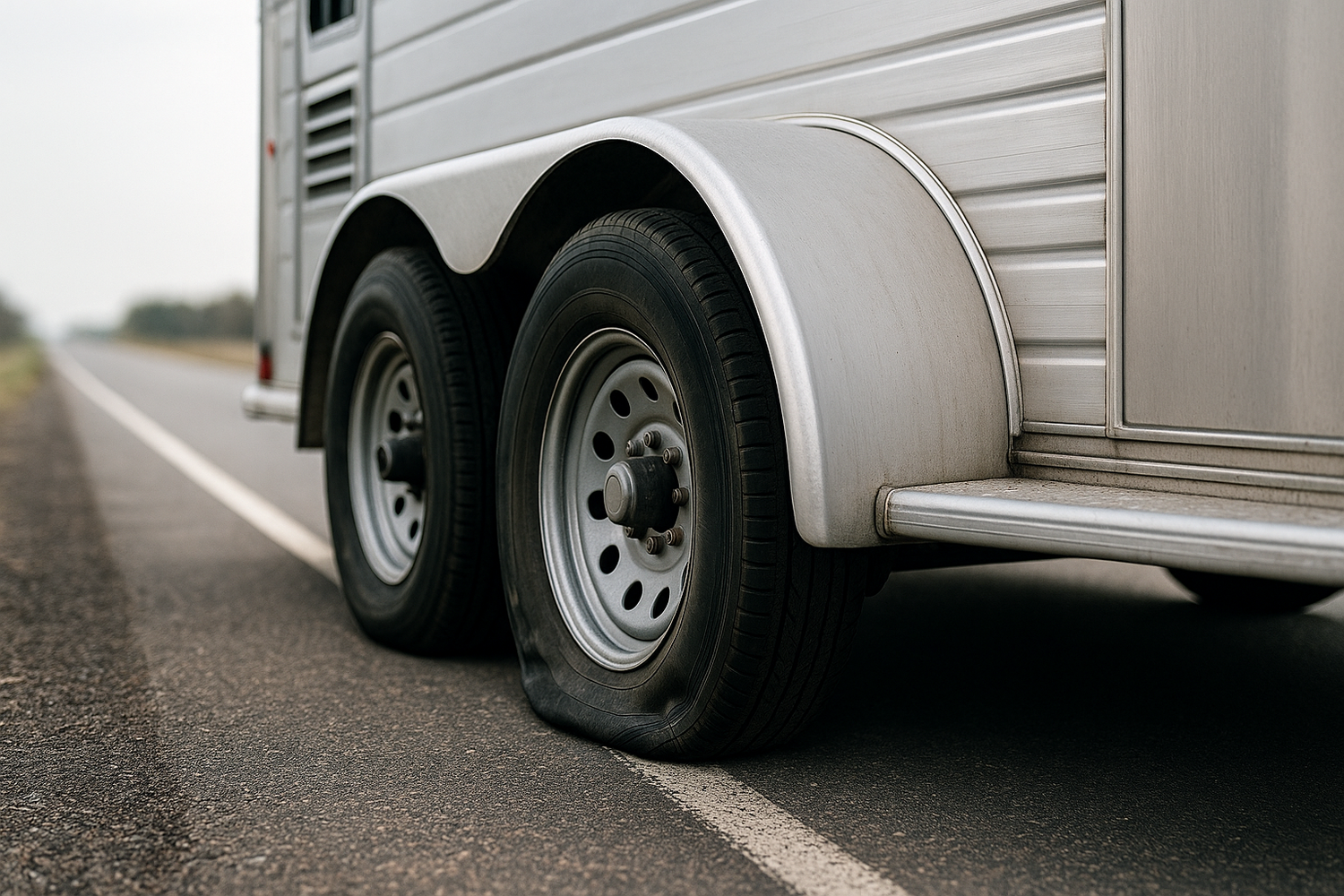When it comes to ensuring the safety and longevity of your travel trailer, checking wheel bearings is a fundamental task that should never be overlooked. Wheel bearings play a critical role in the smooth operation of your trailer, allowing the wheels to rotate freely while supporting the weight of the load. Regularly inspecting these components can prevent serious issues, such as overheating or even catastrophic failure during your travels.
Understanding how to check wheel bearings on a travel trailer can save you both time and money in the long run. Not only does this maintenance practice enhance safety, but it also contributes to a better towing experience. Over time, bearings can wear down, become misaligned, or suffer from a lack of lubrication, leading to increased friction and potential breakdowns.
In this guide, we will provide you with a step-by-step approach to checking your travel trailer's wheel bearings. From the tools you'll need to the signs of wear and tear to look out for, you'll gain valuable insights that will empower you to tackle this essential maintenance task with confidence.
So, whether you're a seasoned traveler or a novice to the world of trailers, it's time to equip yourself with the knowledge necessary for safe and reliable hauling. Tow with peace of mind, knowing that TrailerWatchdog is standing guard. To learn more about our unique trailer monitoring system, visit trailerwatchdog.com.
Understanding the Importance of Wheel Bearings Maintenance
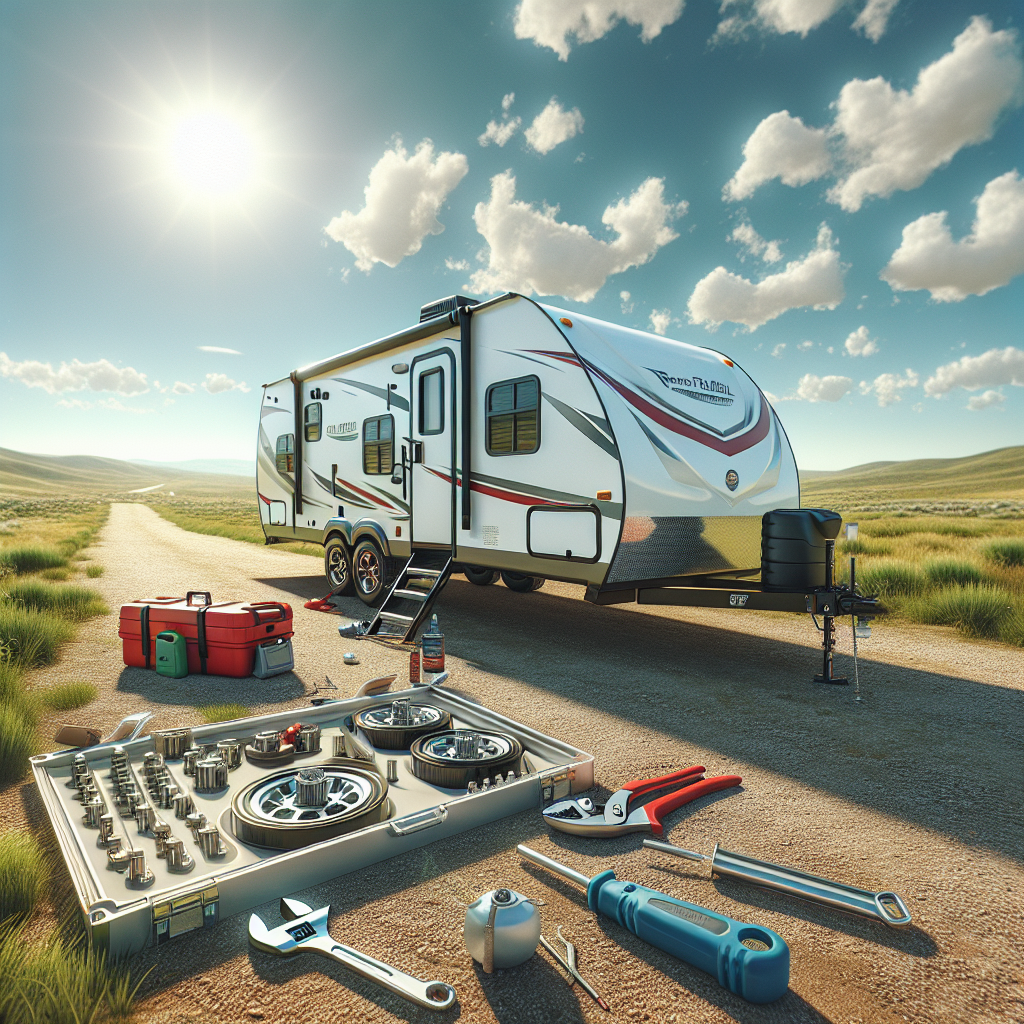
Maintaining the wheel bearings of your travel trailer is not just about keeping your vehicle functioning; it is crucial for your safety on the road. Wheel bearings are the unsung heroes that facilitate the smooth rotation of the wheels, enabling your trailer to tow effectively. Without proper maintenance, these components can deteriorate, leading to serious consequences.
One of the primary reasons for regular wheel bearing maintenance is to prevent overheating. As the bearings wear down or become insufficiently lubricated, friction increases, generating heat. This heat can warp the bearing surfaces, leading to premature failure and potentially causing the wheel to seize while driving. Such scenarios can result in dangerous situations on busy roads.
Moreover, neglected wheel bearings can lead to uneven tire wear. When bearings fail, they can cause the wheels to misalign, putting uneven pressure on your tires. This not only reduces tire lifespan but can also compromise vehicle handling, making it essential to keep these components in top shape.
Regular inspections allow you to detect potential issues before they escalate. Look for signs such as unusual noises, vibrations, or excessive play in the wheel. By addressing these problems early, you can ensure a safer and more enjoyable travel experience.
In summary, the importance of wheel bearing maintenance cannot be overstated. By dedicating time to this aspect of trailer care, you enhance your safety, improve towing performance, and extend the lifespan of both your tires and trailer components.
Tools Needed for Inspecting Wheel Bearings
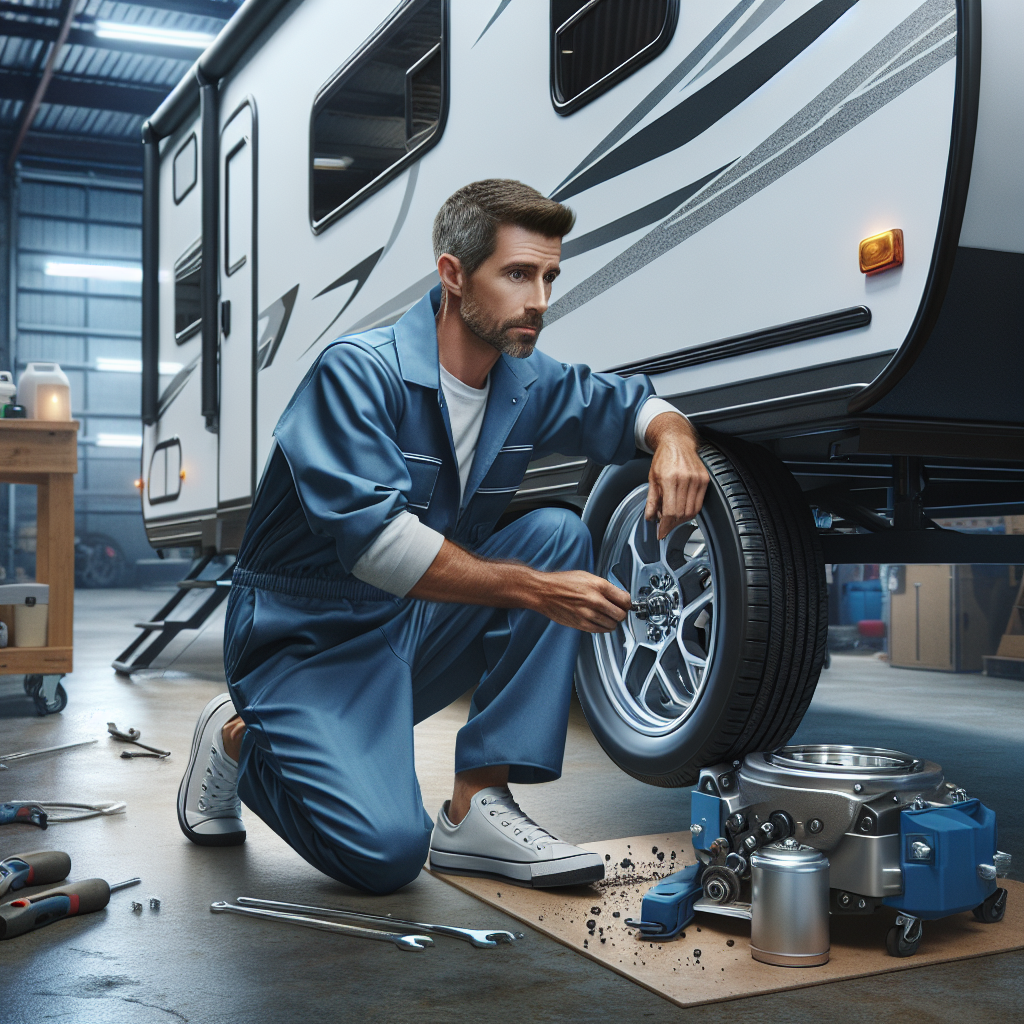
To effectively inspect the wheel bearings on your travel trailer, having the right tools at your disposal is essential. Below is a list of the necessary equipment that will facilitate a thorough and efficient inspection process:
- Jack and Jack Stands: A reliable jack is crucial for lifting your trailer safely. Always use jack stands to secure the trailer once it’s elevated, ensuring stability during your inspection.
- Wheel Chocks: Placing wheel chocks on the opposite side of the trailer will prevent any movement while you’re working on the wheels.
- Socket Set: A complete socket set is necessary for removing the wheel hub and accessing the bearings. Make sure you have the correct sizes for your specific trailer.
- Grease Gun: Proper lubrication is key for wheel bearings. A grease gun enables you to apply fresh grease to the bearings during maintenance, ensuring they operate smoothly.
- Cleaning Supplies: Having rags, degreasers, and brushes will help clean the bearings and hub assembly. Clean components are essential for assessing the condition of the bearings accurately.
- Torque Wrench: When reassembling the wheel, a torque wrench ensures that lug nuts are tightened to the manufacturer’s specifications, providing safety and preventing wheel detachment.
Equipping yourself with these tools will not only make the inspection process more manageable but also enhance your overall maintenance experience. Proper preparation is key to ensuring that your travel trailer remains safe and reliable on the road.
Step-by-Step Guide to Checking Wheel Bearings

Checking the wheel bearings on your travel trailer is a straightforward process that can save you from potential breakdowns and ensure a smooth journey. Follow this step-by-step guide to effectively inspect your wheel bearings:
- Prepare Your Trailer: Park your trailer on a level surface and engage the parking brake. Use wheel chocks to secure the opposite wheels from rolling.
- Lift the Trailer: Using a jack, lift the trailer at the axle, ensuring that it is stable. Place jack stands underneath to support the trailer securely.
- Remove the Wheel: Use a socket set to remove the lug nuts and take off the wheel carefully, exposing the wheel hub.
- Inspect the Hub: Look for any visible signs of damage or wear on the hub. Check for discoloration, which may indicate overheating, and ensure there are no cracks.
- Check the Bearings: Carefully remove the hub from the spindle to access the bearings. Inspect each bearing for signs of wear, such as pitting, discoloration, or roughness when rolling them between your fingers.
- Clean and Lubricate: Clean the bearings and hub thoroughly using degreasers and rags. After cleaning, apply fresh grease with a grease gun to ensure proper lubrication.
- Reassemble: Reattach the hub to the spindle, ensuring it fits snugly. Use a torque wrench to tighten the lug nuts to the manufacturer’s specifications.
- Lower the Trailer: Carefully remove the jack stands and lower the trailer back to the ground.
By following these steps, you can ensure that your wheel bearings are in good condition, enhancing the safety and performance of your travel trailer.
Signs of Worn or Damaged Wheel Bearings

Being aware of the signs of worn or damaged wheel bearings is crucial to maintaining the safety and reliability of your travel trailer. Ignoring these signs can lead to severe consequences, including accidents or costly repairs. Here are some key indicators to watch for:
- Unusual Noises: One of the first signs of bearing issues is a grinding, squeaking, or rumbling noise that increases with speed. This sound often indicates that the bearings are worn or damaged.
- Excessive Heat: If you notice that the wheel hub is excessively hot to the touch after a trip, it may be a sign that the bearings are not adequately lubricated or are failing.
- Vibration: A shaking or vibrating sensation felt through the trailer while driving can indicate that the wheel bearings are worn out. This vibration can affect the vehicle's handling and stability.
- Uneven Tire Wear: Inspect your tires regularly. If you notice uneven wear patterns on your tires, it may be due to faulty wheel bearings affecting the alignment and balance of the trailer.
- Play in the Wheel: With the trailer lifted, grab the wheel at the top and bottom. If there's noticeable movement or play, it could signify worn bearings that need immediate attention.
Recognizing these signs early can help you take preventive measures, ensuring the longevity of your travel trailer and a safer experience on the road.
Preventive Measures for Wheel Bearings Care
Taking steps to care for your wheel bearings can significantly extend their lifespan and enhance the safety of your travel trailer. Here are some essential preventive measures for wheel bearings care that every trailer owner should follow:
- Regular Inspections: Schedule routine checks of your wheel bearings, especially before long trips. Look for signs of wear, damage, or improper lubrication.
- Proper Lubrication: Ensure that the wheel bearings are consistently lubricated according to the manufacturer’s specifications. Using the right type of grease is critical for optimal performance.
- Check Wheel Alignment: Misalignment can lead to uneven wear on wheel bearings. Regularly check and adjust the alignment of your trailer to maintain even tire wear and reduce stress on the bearings.
- Monitor Tire Pressure: Keeping your tires properly inflated can reduce the load on the wheel bearings. Low tire pressure can cause excessive heat and wear on the bearings.
- Use Quality Parts: When replacing wheel bearings, always opt for high-quality, reliable parts. Cheap alternatives may save money in the short term but can lead to more significant expenses down the line due to failures.
By adopting these preventive measures, you can help ensure that your travel trailer remains safe and reliable for all your adventures. Tow with peace of mind, knowing that trailerwatchdog is standing guard.





